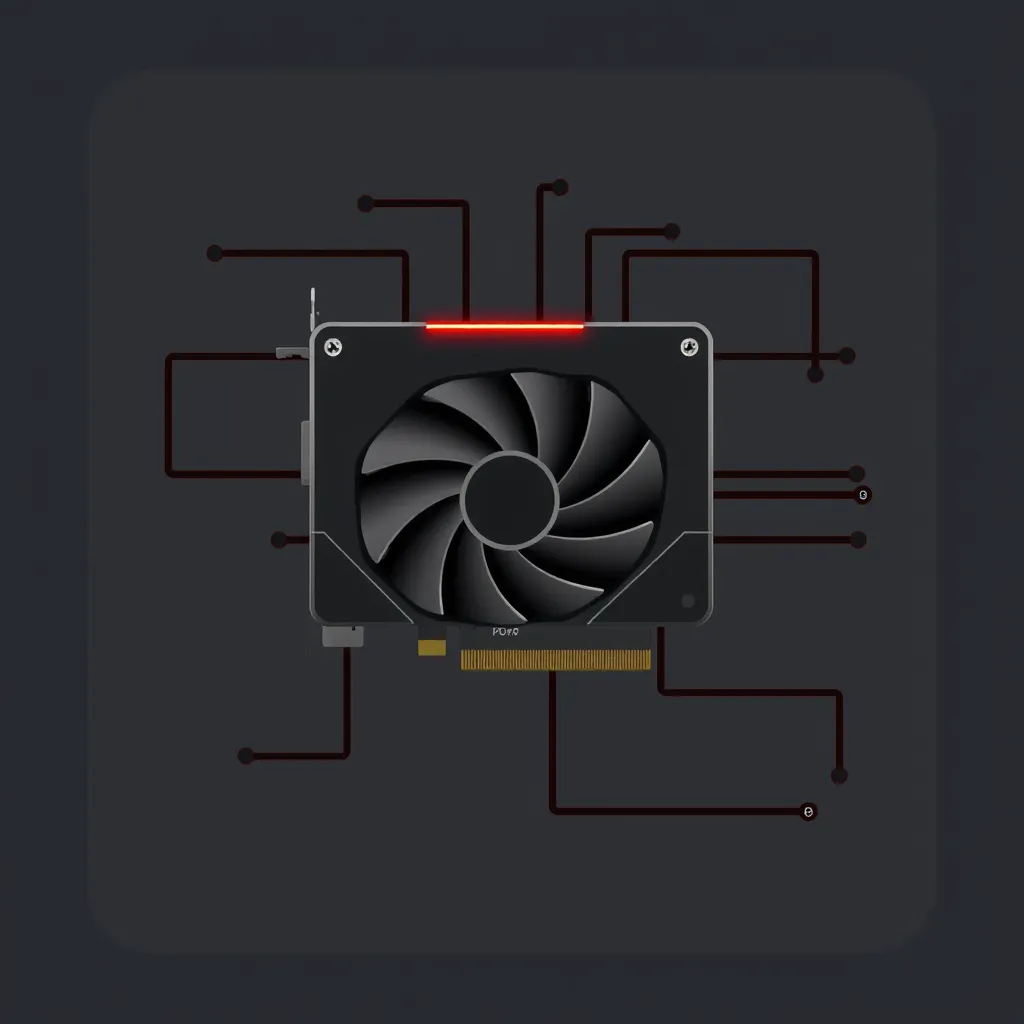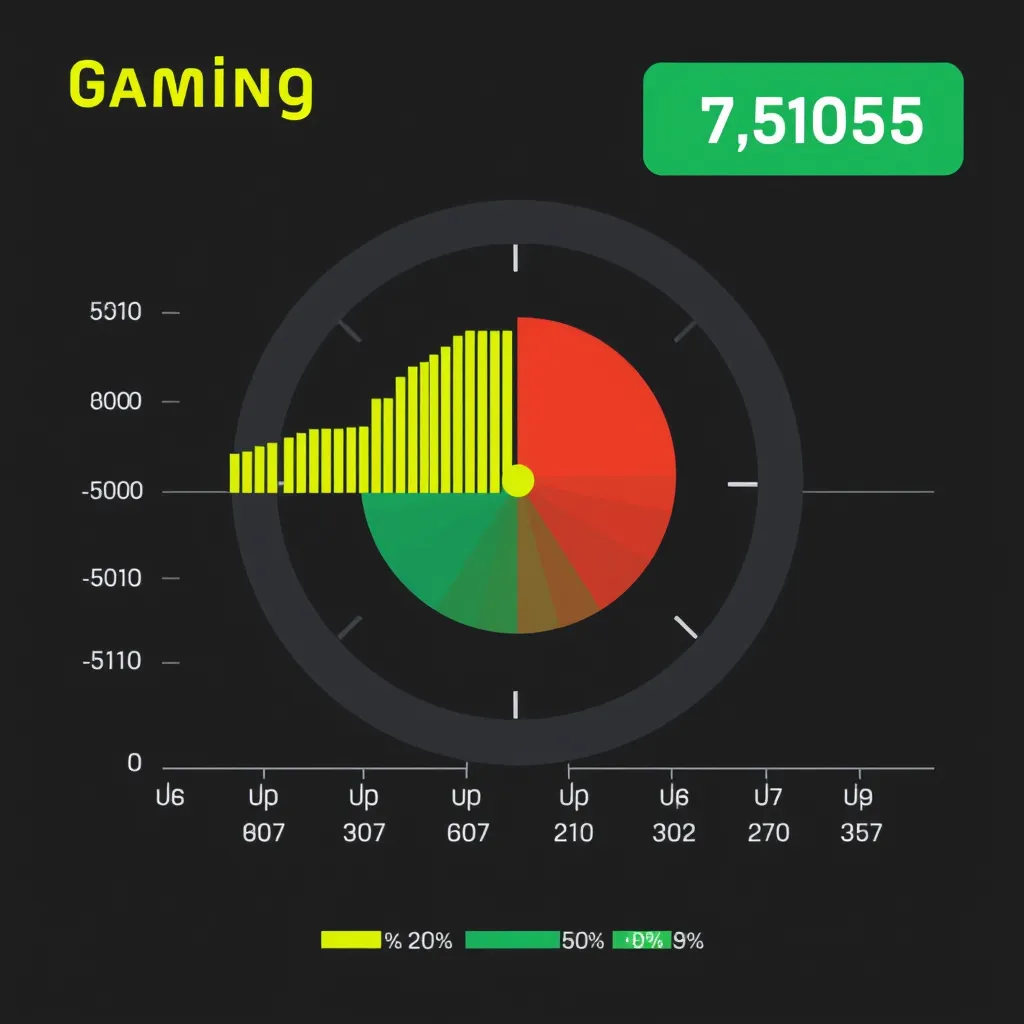Maximizing Gaming Performance starts here! Learn how to calculate bottlenecks for an optimal gaming experience and unleash your system’s true potential.
Bottleneck Calculator For Gaming Success
Identify performance limitations in your gaming PC and optimize your setup for maximum performance
CPU Configuration
GPU Configuration
Bottleneck Analysis
Optimization Recommendations
Upgrade Your Graphics Card
Consider upgrading to a more powerful GPU to eliminate the bottleneck at 1440p resolution.
Increase Game Settings
At higher resolutions, increasing graphics settings can help balance CPU and GPU utilization.
Enable DLSS/FSR
Use AI upscaling technologies to reduce GPU load while maintaining visual quality.
Table of Contents
Discover the significance of bottleneck calculators in optimizing gaming performance. This comprehensive guide explores the roles of CPUs and GPUs, how to identify bottlenecks, and tips for enhancing your gaming setup. Learn to analyze your hardware configuration, understand utilization rates, and implement efficient upgrades to achieve a seamless gaming experience. Harness the power of advanced technologies and real-world testing to unlock your system's full potential, ensuring smoother graphics and enriched gameplay.
Introduction to Bottleneck Calculators
Bottleneck calculators are essential tools for gamers who wish to optimize their gaming experience by identifying performance limitations within their gaming setups. At the core of gaming performance lies the interplay between the central processing unit (CPU) and the graphics processing unit (GPU). Understanding their respective roles is paramount, as a disbalance between them can lead to inefficient performance, significantly affecting the gaming experience.
A bottleneck occurs when one component of the system limits the performance of another. For instance, a high-end GPU may not perform to its full potential if paired with an under-powered CPU, which can hinder frame rates and overall gameplay quality. Conversely, an advanced processor may be wasted with a low-performance graphics card, where the GPU cannot deliver the expected graphic fidelity and speed. This is where bottleneck calculators come into play, as they assist users in discerning which component is creating a bottleneck.
These calculators use various metrics such as CPU utilization, GPU utilization, and system requirements of specific games to evaluate performance metrics. By inputting specifications of gaming rigs, users can receive insights into potential upgrades and configurations that could enhance their gaming experiences. The key advantage of using bottleneck calculators lies in their ability to simplify complex hardware interactions, allowing gamers to make informed decisions without the need for extensive technical knowledge.
Understanding bottlenecks empowers gamers to tweak their setups effectively, thus ensuring that both the CPU and GPU operate harmoniously, ultimately leading to an optimized gaming experience. With the right tools and knowledge, gamers can maximize performance, ensuring that their systems deliver the peak performance necessary for immersive gameplay.
Understanding Your CPU Configuration

The central processing unit (CPU) plays a vital role in determining gaming performance, acting as the brain of your computer. When choosing a CPU, gamers often consider two primary brands: Intel and AMD, both of which offer a range of models tailored to different gaming needs. Each CPU model has variations in specifications like clock speed and core count, which directly influence gameplay experiences.
Intel’s current lineup showcases high-performance options including the Core i9-13900K, i7-13700K, and i5-13600K. The Core i9-13900K stands out as a powerhouse, sporting a high base clock speed, powerful multi-threading capabilities, and a larger core count that excels in handling demanding tasks, making it suitable for gamers seeking top-tier performance. The i7-13700K also offers robust specifications with a slightly lower clock speed while still delivering excellent gaming experiences. For users looking for a balance between performance and cost, the i5-13600K presents a solid option, providing adequate performance for most gaming needs without overshooting the budget.
On the other hand, AMD’s offerings include the Ryzen 9 7950X, Ryzen 7 7800X3D, and Ryzen 5 7600X. The Ryzen 9 7950X boasts an exceptional core count and is optimized for multi-tasking, benefiting gamers who also engage in content creation. The Ryzen 7 7800X3D, with its innovative cache architecture, is tailored for high gaming performance, particularly excelling in scenarios requiring rapid data access. Lastly, the Ryzen 5 7600X offers a compelling entry-level choice, striking a balance between affordability and performance suitable for casual gamers.
Understanding these configurations is essential, as the choice between Intel and AMD can significantly impact overall gaming performance. Factors such as clock speed and core count should be carefully evaluated based on individual gaming preferences and budget constraints, ensuring a tailored gaming experience that maximizes performance potential.
Exploring GPU Configuration

When discussing gaming performance, the configuration of the Graphics Processing Unit (GPU) plays a pivotal role. Among the prominent GPU manufacturers, Nvidia and AMD stand out with their advanced models and extensive capabilities. Understanding these configurations allows gamers to select the appropriate GPU to meet their performance needs.
Nvidia’s current lineup includes the RTX 4090, RTX 4080, and RTX 4070. The RTX 4090 is designed for the highest echelon of gaming performance, equipped with a significant amount of VRAM which facilitates seamless gameplay at 4K resolution. This card not only excels in rendering high-fidelity graphics but also utilizes advanced features like ray tracing and DLSS for enhanced visual quality and frame rates. The RTX 4080, slightly lower in power but still formidable, offers excellent capabilities for 1440p gaming, making it a versatile choice for gamers who prioritize performance without necessarily aiming for 4K resolution.
Conversely, the RTX 4070 caters to those seeking a more budget-friendly option while still allowing for competitive gaming at 1080p and mid-range performance at 1440p. Its balance between cost and capability makes it a favorite among gamers looking to maximize their value.
In the AMD lineup, the RX 7900 XTX, RX 7800 XT, and RX 7700 XT represent significant offerings for those favoring AMD graphics solutions. The RX 7900 XTX is AMD's flagship card, boasting an impressive VRAM which allows for high-performance gaming at 4K. The RX 7800 XT offers robust performance at 1440p while also being well-suited for various gaming scenarios. Lastly, the RX 7700 XT is geared toward budget-conscious gamers, providing solid performance for 1080p gaming while delivering an admirable VRAM capability. Each of these GPUs contributes uniquely to gaming experiences, and careful consideration of resolutions and gameplay styles can significantly impact the choice for gamers looking to optimize their systems.
Game Settings and Resolution Impact

When evaluating gaming performance, understanding the impact of game settings and resolution is paramount. Game resolution, such as 1080p, 1440p, and 4K, significantly influences how both the CPU and GPU are utilized. At its core, resolution defines the number of pixels rendered on the screen, thereby directly affecting the graphical load placed on the GPU. Higher resolutions mean more pixels, which in turn requires more processing power. For instance, while 1080p gaming often allows for smoother performance and higher frame rates, transitioning to 1440p or 4K can lead to increased demand, potentially leading to a bottleneck situation if the hardware is not sufficiently powerful.
Additionally, the graphics settings play a pivotal role in determining gaming performance. Settings can range from low to ultra, each impacting the system's performance differently. Lower settings typically reduce the graphical load, allowing the GPU to render frames more efficiently. This can help alleviate bottlenecks, particularly in situations where the CPU or GPU is being pushed to its limits. Conversely, higher settings enhance visual fidelity but can exacerbate any existing bottleneck issues by demanding more resources from the CPU and GPU, reducing overall frame rates and potentially diminishing the gaming experience.
It is essential for gamers to strike a balance between resolution and graphical settings that aligns with their hardware capabilities. A well-calibrated setup can lead to optimal gaming performance. For example, if a gamer possesses a mid-range GPU, employing 1080p resolution with medium to high settings might yield a better performance outcome compared to pushing the same hardware to deliver 4K visuals at ultra settings. As a result, experimenting with various configurations can lead to enhanced gameplay while reducing the chances of encountering noticeable bottlenecks.
Conducting a Bottleneck Analysis
To maximize gaming performance, conducting a bottleneck analysis is imperative for identifying potential limitations within your PC's hardware configuration. Primarily, this analysis focuses on the interaction between the CPU and GPU, as these components are critical for overall system performance in gaming. Utilizing a bottleneck calculator can substantially streamline this process, offering insights into how effectively your CPU and GPU can work together and whether one component is hindering the gaming experience.
The bottleneck calculator provides several essential metrics that aid in this evaluation, including the bottleneck percentage. This figure represents the degree to which one component, typically the CPU or GPU, is restricting performance relative to the other. A bottleneck percentage of 0% indicates no limitations, while percentages can vary from minimal (<10%), moderate (10-25%), significant (25-50%), to severe (>50%). Understanding these levels of bottlenecking is key; for instance, a severe bottleneck often leads to noticeable frame rate drops and stuttering during gameplay, as one component is drastically underutilized in comparison to the other.
Let’s consider a real-world example. Suppose a gaming rig features a high-performance GPU but is paired with an older CPU. Upon performing a bottleneck analysis, the calculator reveals a bottleneck percentage of 45%. This indicates a significant imbalance in performance, suggesting that upgrading the CPU could unlock the full potential of the GPU, leading to smoother gameplay and improved frame rates. Conversely, if the analysis shows a minimal bottleneck, users can be confident in their current hardware setup for gaming without major upgrades.
In conclusion, conducting a thorough bottleneck analysis is an essential step for any gamer looking to optimize their system’s performance. By understanding bottleneck metrics and utilizing a calculator, users can make informed hardware decisions that enhance their gaming experience.
Interpreting Bottleneck Results
Understanding the results from a bottleneck calculator is crucial for enhancing gaming performance. Typically, a bottleneck occurs when one component of a gaming rig, such as the CPU or GPU, limits the overall performance potential. When analyzing the results, two primary indicators should be examined: bottleneck percentages and utilization rates.
A bottleneck percentage reflects the extent to which a specific component is affecting gaming performance. For instance, if a bottleneck percentage is reported as 15%, it signifies that the component is working at a capacity that constrains the overall performance to a notable degree. An ideal scenario would involve a bottleneck percentage close to or at zero, implying the system is functioning in balanced harmony. Conversely, a high bottleneck percentage indicates that performance could be significantly improved by upgrading the constrained component.
Utilization rates are equally important in understanding performance implications. A CPU utilization rate that consistently hits 90% or higher suggests that the CPU is fully engaged, leading to potential lag and frame drops during gaming. On the other hand, if the GPU utilization is low while the CPU is heavily utilized, it may suggest a CPU bottleneck. Conversely, if both components are running below optimal levels, this could imply that neither component is being adequately utilized, leading to an unsatisfactory gaming experience.
Specific scenarios can illustrate how bottleneck results impact gameplay. For instance, a gamer with a high-end GPU but an outdated CPU might experience frame rate drops in demanding titles due to CPU limitations. This situation underscores the necessity for a balanced configuration to maximize gaming performance. Hence, interpreting the data from the bottleneck analysis is integral to guiding hardware upgrades and optimizing the overall gaming experience.
Optimization Recommendations
To maximize gaming performance and improve the overall experience, addressing bottlenecks through targeted upgrades is essential. The first recommendation is to enhance the graphics card, as it is often the most significant component influencing gaming performance. An upgraded GPU can facilitate higher frame rates and better graphics settings, allowing modern games to leverage advanced visual technologies such as ray tracing and higher resolutions. It is advisable to select a graphics card that matches the performance capabilities of the rest of the system to avoid potential performance limitations.
Increasing game settings can also contribute to optimizing performance. However, this should be approached with caution. Players should assess the current capabilities of their hardware before making adjustments to settings such as texture quality, resolution, and shadow depth. By incrementally increasing these settings, users can identify the optimal balance that delivers improved visuals without sacrificing playability. Tools that monitor system performance in real-time can assist in determining the most effective settings.
Another powerful option for performance enhancement lies in utilizing AI upscaling technologies such as NVIDIA's DLSS (Deep Learning Super Sampling) or AMD's FSR (FidelityFX Super Resolution). These technologies employ advanced algorithms to upscale lower-resolution images in real-time, allowing players to enjoy higher frame rates without a significant loss in visual quality. By activating these features, gamers can significantly improve performance, especially in graphically intensive titles, ensuring a smoother gaming experience.
Finally, regular maintenance of the gaming system, including updating drivers and ensuring adequate cooling, cannot be overlooked. Keeping drivers up to date optimizes performance by leveraging the latest enhancements, while proper cooling prevents thermal throttling that can impede frame rates during extended play sessions. By implementing these recommendations, gamers can effectively alleviate performance limitations and enjoy an enhanced gaming experience.
Real-World Testing and Benchmarks
In the realm of gaming, theoretical performance estimates derived from bottleneck calculators are helpful, yet they may not fully capture a system's true gaming capabilities. Real-world testing and benchmarking are essential for validating these theoretical results and providing a more comprehensive overview of how a gaming setup performs under actual operating conditions. Several factors contribute to discrepancies between predicted and actual performance, including variations in game design, graphics drivers, and overall system configurations.
Different games can place unique demands on a system, leading to varying performance outcomes. For instance, a graphically intensive title may expose a graphics card's limitations, potentially revealing a bottleneck that was overlooked in simple calculations. Likewise, less demanding games might allow for smoother gameplay even on a system that theoretically has bottleneck issues. Consequently, it is crucial for gamers to test their setups with the titles they plan to play to ascertain real-world performance.
Moreover, the role of drivers cannot be underestimated, as updates can significantly influence performance. Outdated drivers might hinder a hardware component's capabilities, presenting a false image of a bottleneck that could be resolved with proper updates. Testing with the most current drivers ensures accurate insight into your system's capabilities.
System configurations also play a critical role in performance. For example, a gaming rig with overclocked components may demonstrate a substantial increase in performance, highlighting that benchmarks should be taken as indicative rather than definitive. By conducting detailed benchmarks and gameplay tests, users can establish a clearer understanding of their gaming performance, taking into consideration real-world factors that affect playability, frame rates, and overall enjoyment.
Conclusion: Achieving Optimal Gaming Performance
In this blog post, we have delved into the essential aspects of gaming performance optimization, focusing on the concept of bottleneck calculation. Understanding bottlenecks is crucial for gamers seeking to enhance their overall experience, as these limitations can significantly impact gameplay and user satisfaction. Through a careful analysis of various components such as the CPU, GPU, and RAM, we identified how these elements interact and contribute to the ntegrity of gaming performance.
By leveraging the methodologies outlined, readers can efficiently diagnose bottlenecks within their own setups. Tools and techniques for measuring performance indicators were discussed, allowing gamers to quantify the efficiency of their systems. This proactive approach to identifying and rectifying performance issues empowers players to achieve smoother graphics, reduced lag, and an overall more immersive gaming experience.
Moreover, we emphasized the importance of balancing the system components to ensure that no single bottleneck inhibits performance. This requires an informed selection of hardware and a keen understanding of how upgrades can enhance the functionality of a gaming rig. We encouraged readers to consider not only CPU and GPU interactions but also the significance of memory speeds and storage solutions that can further minimize delays and improve load times.
Ultimately, the pursuit of optimal gaming performance is an ongoing process, and each system will present unique challenges. By applying the guidelines and insights provided, gamers can take significant strides towards maximizing their gaming potential. Embracing regular assessments of hardware compatibility and performance metrics will lead to a more enjoyable and efficient gaming experience, fulfilling the broader ambitions of today’s gaming landscape.
